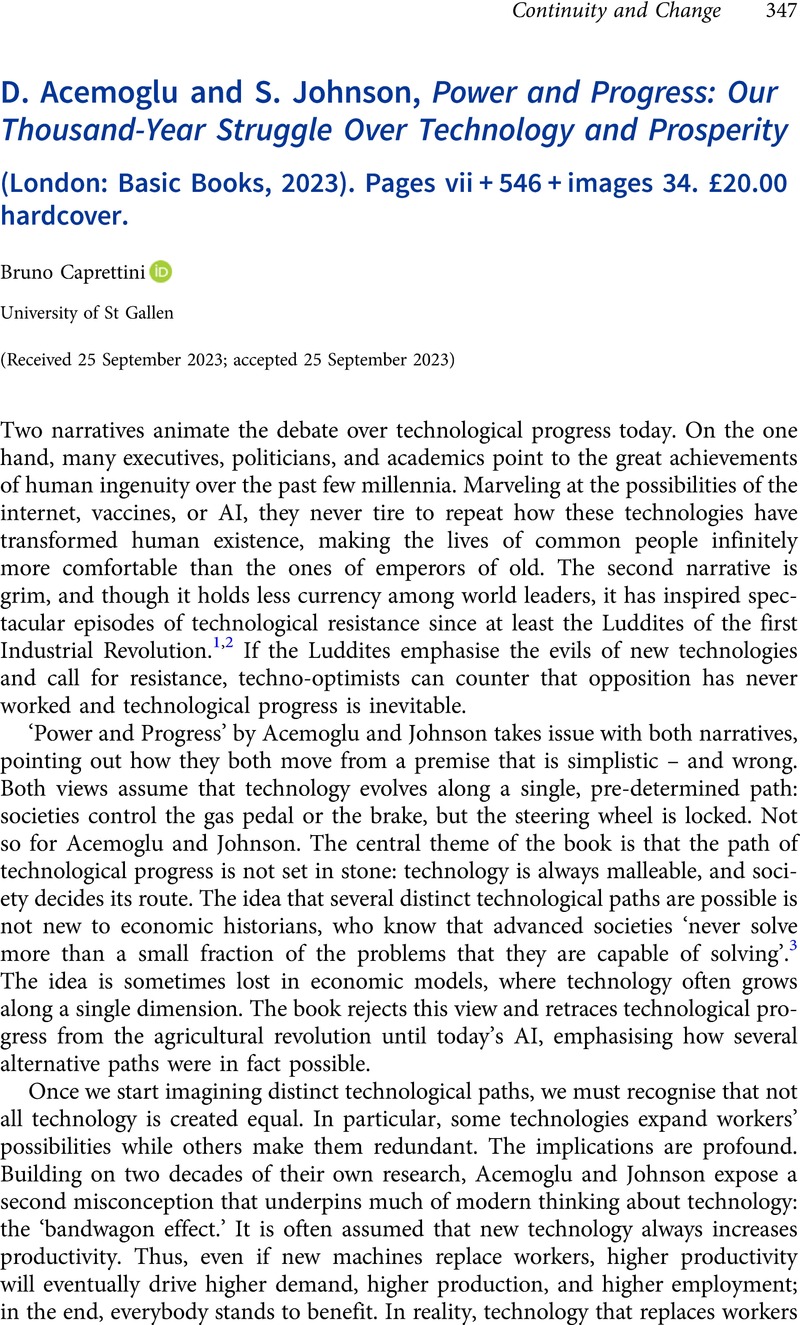No CrossRef data available.
Published online by Cambridge University Press: 06 November 2023

1 Hobsbawm, Eric J., ‘The machine breakers’, Past & Present 1 (1952), 57–70CrossRefGoogle Scholar.
2 Caprettini, Bruno and Voth, Hans-Joachim, ‘Rage against the machines: labor-saving technology and unrest in industrializing England’, American Economic Review: Insights 2, 3 (2020), 305–20Google Scholar.
3 Rosenberg, Nathan, ‘The direction of technological change: inducement mechanisms and focusing devices’, Economic Development and Cultural Change 18, 1, Part 1 (1969), 1–24CrossRefGoogle Scholar.